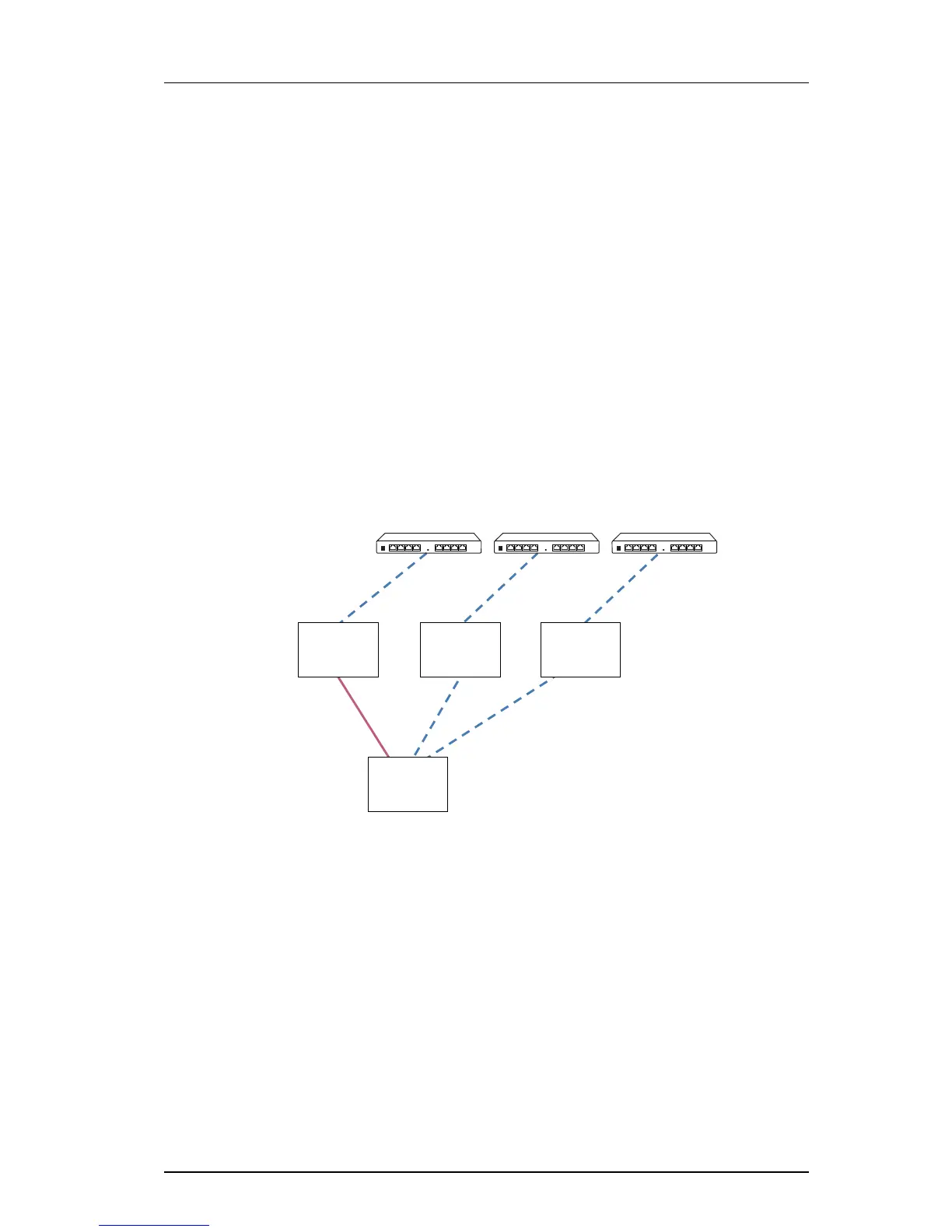TD 92579EN
15 February 2012 / Ver. H
Installation and Operation Manual
IP-DECT Base Station & IP-DECT Gateway (software version 5.0.x)
158
Appendix E: Load Balancing
Load balancing can be used in an IP-DECT system when the number of handsets exceeds
what an IP-PBX is able to register.
When load balancing the traffic is distributed over several IP-PBXs which can be done in
two ways using:
• fixed connections for users on each Master towards multiple IP-PBXs.
• dynamic connection for users on each Master towards IP-PBX network using DNS
services.
E.1 Load Balancing Using Fixed Connection Towards IP-PBXs
When the number of users exceeds what an IP-PBX is able to register, you can load
balance using several IP-PBXs where each Master in the IP-DECT system is connected to a
fixed IP-PBX.
Note: For redundancy, an alternative gatekeeper/proxy should always be used.
Figure 1. Load balancing using fixed connection towards IP-PBXs.
1 Select DECT > Master.
2 In the drop-down list, select "SIP" protocol.
3 Enter the IP address or host name and optionally port of proxy (e.g. proxy1.ascom-
rd.com:5060) to the SIP proxy (registrar) in the Proxy text field.
4 To get redundancy: Enter the IP address or host name and optionally port of proxy
(e.g. proxy2.ascom-rd.com:5060) to the alternative SIP proxy (registrar) in the Alt.
Proxy text field.
5 Reset in order to make the changes take effect, see 8.22 Reset.
E.2 Load Balancing Using Dynamic Connection Towards IP-PBX Network
When the number of users exceeds what an IP-PBX is able to register, you can use load
balancing towards an IP-PBX network. Using DNS services, users on each Master are
IP-PBX
Master 2
Radio
Master 0
Pari Master
Master 1
IP-PBX IP-PBX

